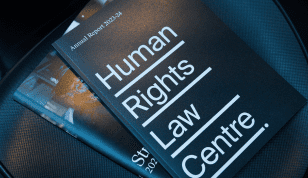Balancing of the right to family life against the protection of the child
In the matter of J (Children) [2013] UKSC 9
Summary
The United Kingdom Supreme Court has considered the appropriate balance to be struck between the right of the child to live in a safe and nurturing environment and the right to family life in circumstances where those two rights are said to be in conflict. Although these rights are most often complementary, there are unfortunate cases where a child is at risk of being harmed by a family member and protecting the child (and upholding their human rights) can necessitate an intrusion by the State into a family’s private life. In this judgment, the Court made a weighted legal analysis of when and how such an intrusion can be justified.
Facts
The case looked at a particular family situation where local authorities were considering removing children from their home because of concern that they may be harmed by one of their caregivers. The mother/step-mother of the children concerned had a child with a former partner and it had been previously found that her child had died because of mistreatment, though it could not be established which parent had perpetrated the harm. As a result the parents lost custody of their second child. After the couple separated, the woman, pregnant from her former partner, started a relationship with a single father of two. The case before the Court concerned the protection of this man’s two children and the woman’s child, who were under the care of the new couple.
The question the Court was essentially required to resolve was: when there is a pool of two or more suspected perpetrators of past harm to a child and one of these potential perpetrators is now a primary caregiver to another child, does the strong possibility that this caregiver has previously perpetrated harm against a child establish a strong likelihood that this person will harm the another child in the future?
The court was required to decide whether, based on these facts and the likelihood of past harm, protective measures should be taken to safeguard the children now in the couple’s care notwithstanding that such protective measures would constitute an encroachment by the State upon the right to family.
Decision
The Court found that the right to family life, and the protection against State intrusion into it, should be preserved unless there is a clearly established and objective basis for intervention. In the words of Lady Hale, reiterated by her colleagues: “My view remains that the need for the local authority to prove the facts which give rise to a real possibility of significant harm in the future is a bulwark against too ready an interference with family life on the part of the state.”
Consequently, the Court unanimously decided that a strong possibility of past harm did not in and of itself establish a strong likelihood of perpetrating harm in the future.
Commentary
Courts are often called upon to resolve tensions between rights that may ordinarily be complementary but be in conflict in the context of a particular case. This Supreme Court decision confirms that any limitation to a basic right must be considered carefully and can only be justified when it is based on clear evidence as to necessity and is in response to a pressing need or in pursuit of some other legitimate aim. Further, any interference must be proportionate to the aim sought to be achieved.
When the State is considering removing a child from his or her home, the two rights being balanced are not necessarily contradictory. Indeed, it is generally in the child’s interests to remain with his or her family and it can be deeply damaging to the child if he or she is removed on insufficient grounds. Accordingly, the Court was unanimous in deciding that without a high threshold for intervention, there would be no “pressing social need” or legitimate aim sufficient to warrant intrusion by the state into family life.
In Australia, a child protection intervention is authorised where a court believes that a child or young person is in “need of care”, “in need of protection”, “in need of care and protection”, “at risk”, or “at risk of harm” as variously described in the legislation of the states and territories. This wording is very similar to the wording on which the UK decision is based, although in Australia there is no overarching federal or state act protecting the right to family life.
This decision is available online at: http://www.bailii.org/uk/cases/UKSC/2013/9.html
Candice Van Doosselaere is a volunteer at the Human Rights Law Centre.

Landmark decision ordering Shell to cut CO2 emissions from its global operations by 45% overturned by Hague Court of Appeal
On 12 November 2024, the Court of Appeal of the Hague overturned the landmark 2021 decision of the District Court of The Hague (District Court) in Milieudefensie et al v Royal Dutch Shell, which had ordered Shell to cut CO2 emissions from its global operations by 45% by the end of 2030.
Read more
Young campaigners landmark victory for children’s rights as new coal-fired power generation deemed unconstitutional in South Africa
The High Court of South Africa ruled that the government’s plans to add 1,500 megawatts of new coal-fired power stations were “unlawful and invalid”. In a youth-driven petition brought by three civil society organisations, the Court found that the plans failed to adequately consider the impacts of coal-fired power on children’s rights, particularly their constitutional right to a healthy environment.
Read more
Tribunal found Southern Restaurants imposed unreasonable conditions on a young breast-feeding mother leading to a finding of discrimination
A young breastfeeding mother was found to have been discriminated against by her employer and awarded $90,000 in compensation.
Read more


